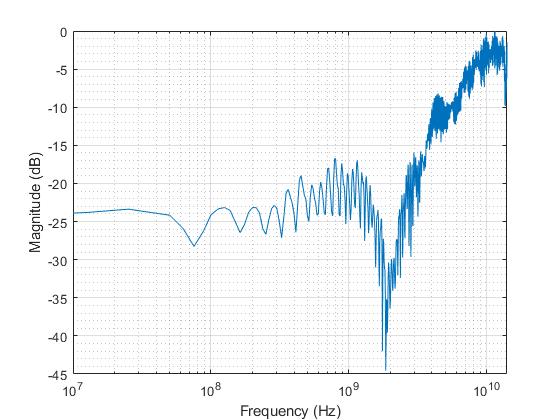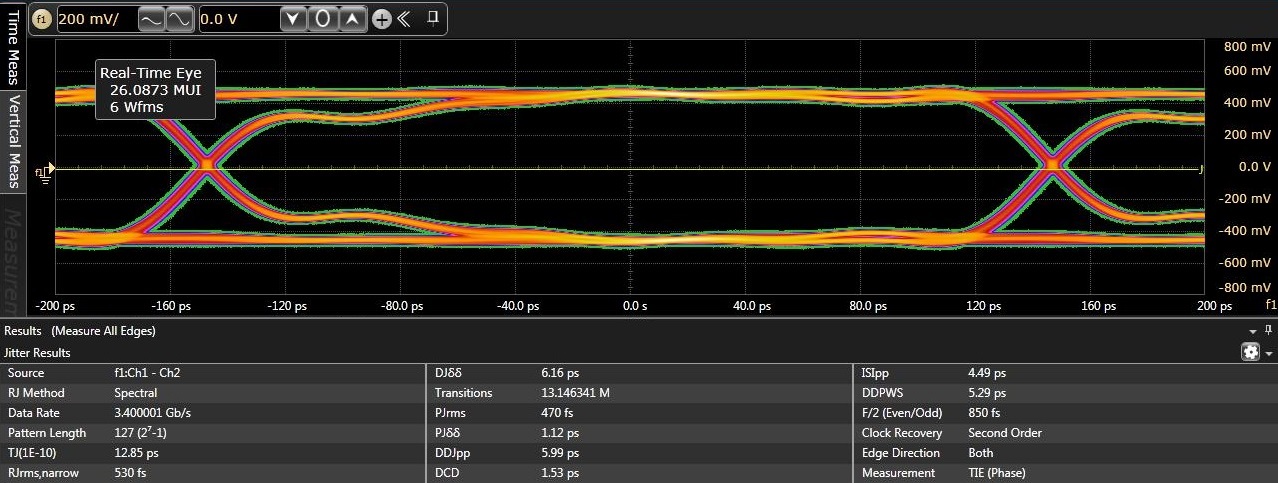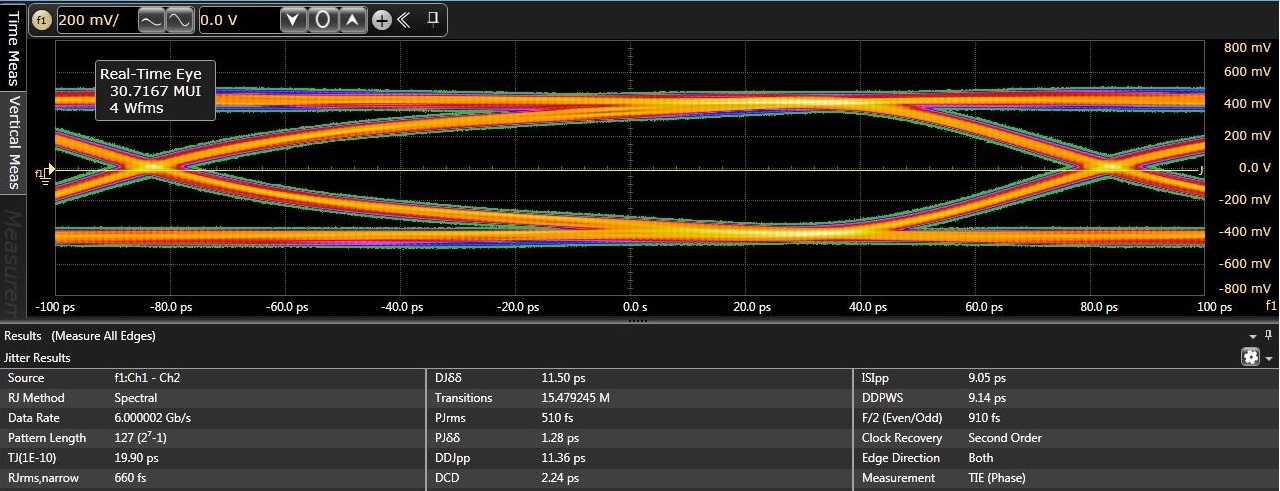ZHCSO28A December 2020 – May 2021 TS3DV642-Q1
PRODUCTION DATA
- 1 特性
- 2 應用
- 3 說明
- 4 Revision History
- 5 Pin Configuration and Functions
- 6 Specifications
- 7 Parameter Measurement Information
- 8 Detailed Description
- 9 Application and Implementation
- 10Power Supply Recommendations
- 11Layout
- 12Device and Documentation Support
- 13Mechanical, Packaging, and Orderable Information
6.8 Typical Characteristics
Figure 6-1, Figure 6-2, Figure 6-3 and Figure 6-4 show typical high speed performance plots for TS3DV642-Q1 in TI evaluation board with measurement parasitics calibrated out.
 Figure 6-1 Typical
differential gain vs frequency
Figure 6-1 Typical
differential gain vs frequency |
 Figure 6-2 Typical
return loss vs frequency
Figure 6-2 Typical
return loss vs frequency |
 Figure 6-3 Typical
differential cross-talk vs frequency
Figure 6-3 Typical
differential cross-talk vs frequency |
 Figure 6-4 Typical
differential off-isolation vs frequency
Figure 6-4 Typical
differential off-isolation vs frequency |
Figure 6-5 illustrates eye diagrams at 3.4 Gbps with jitter decomposion shown. As illustrated added total jitter contribution by the TS3DV642-Q1 is minimal - 17 ps and 16 ps through the TS3DV642-Q1 Port A and Port B respectively versus 13 ps through baseline calibration setup without a DUT.


 Figure 6-5 Typical eye diagrams at 3.4
Gbps. Top: baseline calibration setup. Middle: through TS3DV642-Q1 Port A.
Bottom: through TS3DV642-Q1 Port B.
Figure 6-5 Typical eye diagrams at 3.4
Gbps. Top: baseline calibration setup. Middle: through TS3DV642-Q1 Port A.
Bottom: through TS3DV642-Q1 Port B.Figure 6-6 illustrates eye diagrams at 6.0 Gbps with jitter decomposition shown. As illustrated added total jitter contribution by the TS3DV642-Q1 is minimal - 20 ps and 17 ps through the TS3DV642-Q1 Port A and Port B respectively versus 12 ps through baseline calibration setup without a DUT.


 Figure 6-6 Typical eye diagrams at 6.0
Gbps. Top: baseline calibration setup. Middle: through TS3DV642-Q1 Port A.
Bottom: through TS3DV642-Q1 Port B.
Figure 6-6 Typical eye diagrams at 6.0
Gbps. Top: baseline calibration setup. Middle: through TS3DV642-Q1 Port A.
Bottom: through TS3DV642-Q1 Port B.